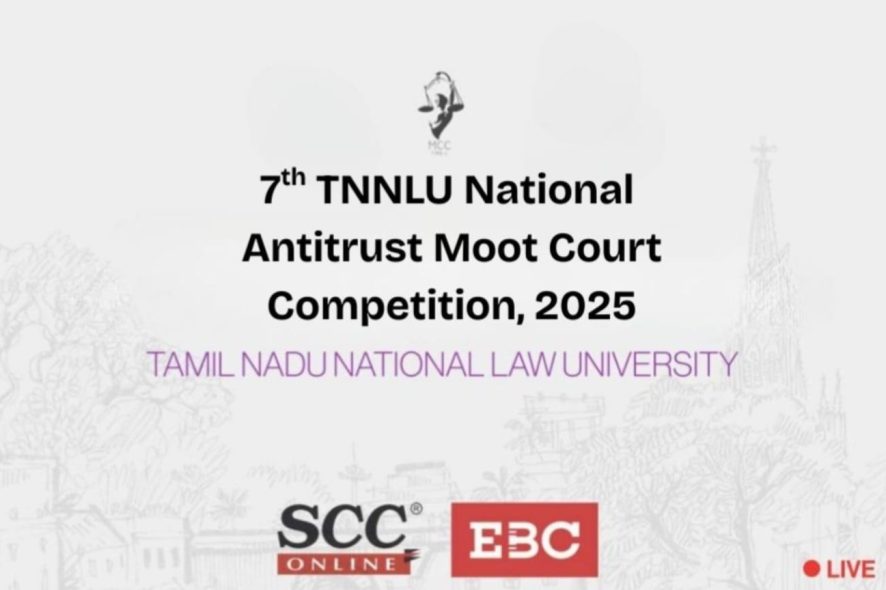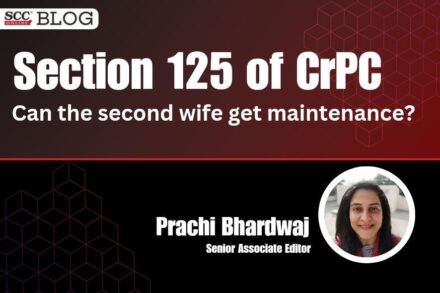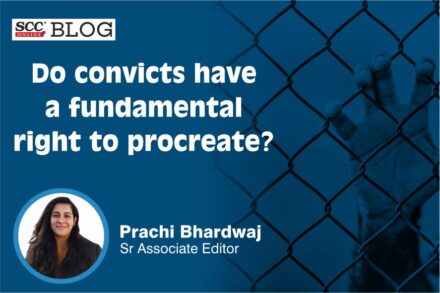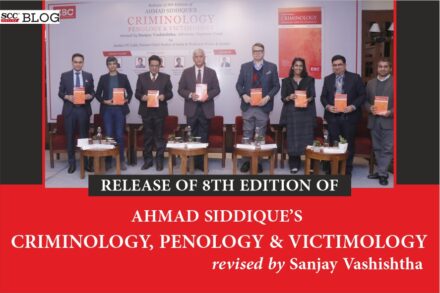Welcome to the Land of Cholas, Tiruchirappalli!
The Tamil Nadu National Law University (TNNLU), through its Moot Court Committee in collaboration with the Centre for Competition Law (CCL), and Eastern Book Company is proud to present the 7th edition of the TNNLU National Antitrust Moot Court Competition at its Tiruchirappalli campus.
Building upon the legacy of six successful editions, this prestigious competition has established itself as a vital platform for budding legal minds to engage with the nuanced and ever-evolving field of Competition Law. With each passing year, the moot has drawn participation from top law institutions across India, challenging participants to apply legal reasoning, strategic argumentation, and an in-depth understanding of contemporary antitrust issues.
This year, the 7th edition focuses on a theme that sits at the intersection of law, technology, and economics: The Impact of Data-Related Policies in the Social Media Space vis-à-vis Competition in the Domestic Market. As digital platforms continue to reshape competitive landscapes, the moot problem urges participants to navigate the legal complexities surrounding data regulation, market dominance, and consumer welfare in the digital age.
TNNLU’s Centre for Competition Law, empaneled by the Competition Commission of India (CCI), continues to drive high-quality research, advocacy, and education in the domain of competition and commercial laws. The moot is a reflection of this commitment aimed not only at sharpening legal acumen but also at fostering critical thinking on regulatory frameworks and market realities.
We warmly welcome 22 teams from across the nation to be a part of this intellectually stimulating event, and we look forward to hosting a celebration of advocacy, innovation, and legal excellence at the 7th TNNLU National Antitrust Moot Court Competition, 2025.
11th April, 2025 (Day-1)
3:30 PM | Registration | UG Block
The Competition began with the registration of teams, setting the stage for an engaging and competitive weekend. The Organizing Committee welcomed participants with warmth and enthusiasm, ensuring a smooth and friendly start to the event. Teams from law schools across the country arrived excitedly, ready to showcase their skills and represent their institutions. The atmosphere was filled with anticipation as students interacted with one another, shared their experiences, and prepared for the rounds ahead. The registration process not only marked the beginning of the competition but also set a positive tone for the days to come.

5:30 PM | Inaugratration Ceremony | UG Block
The event commenced with a warm welcome address by Ms. Jayashree, a member of the Moot Court Committee, who extended her best wishes to all the participants, emphasizing the invaluable experience of presenting arguments in the area of Competition Law. Following her, Mr S. Mohammed Azad, Assistant Professor of Law, Coordinator, Centre for Competition Law, TNNLU delivered the welcome address. He highlighted how the competition would sharpen their analytical skills, and deepen their understanding of Competition Law, inspiring the participants with his encouraging words.
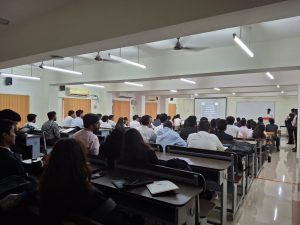
Followed by which Mr Vikram, a senior member of the Moot Court Committee outlined the rules, regulations, and schedule of the competition ensuring all teams are well oriented with same. Afterward, the stage was taken up by Ms. P. Rajeswari, Assistant Professor of Law, Faculty in charge of the Moot Court Committee, who extended her warm welcome and reflected on the essence of mooting, the unbeatable thrill of advocacy coupled with stress and existential crises.
“ If you’ve learned something new, made a friend, or simply enjoyed the process – you’ve already won. Take this experience with you, for it will shape you into better lawyers and thinkers. So take the experience for life and let the competition begin”.
The inauguration session ended with an intimation of the following SCC online training session by Mr. Anish Mishra, 4th Year Law Student, Student Ambassador, SCC Online.
6:00 PM | SCC Online and EBC Reader Training Session | UG Block
The SCC Online and EBC Orientation Session commenced with Mr. Anish Mishra, Student Ambassador for SCC Online and EBC Reader, addressing the participants. He began by underlining the vital role mooting plays in a law student’s academic and professional development. The session then moved into an introduction to SCC Online, beginning with foundational knowledge of how the platform functions, including keyword usage and the importance of precision in legal research. He emphasized commonly used terms such as dominant position and privacy, using the ongoing CCI issue involving WhatsApp as a practical illustration under Section 4 of the Competition Act, 2002.
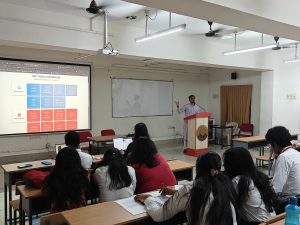
Mr. Mishra explained the utility of the EBC Reader, an academic platform offering access to a wide range of legal materials including bare acts, journals, and textbooks, which can be provided through institutional subscriptions. He also guided participants through the EBC Webstore, where students can conveniently purchase legal publications. Transitioning back to SCC Online, he offered a detailed walkthrough of the Dashboard, showcasing tools available for efficient legal research.
To demonstrate the effective use of SCC Online, Mr. Mishra explored the “Find by Section” tile, using Competition Law as an example. He showed how one can access judgments specifically related to the abuse of a dominant position by entering section-based queries. The session emphasized using the right tools and precise terminology, with a live demonstration of the “Search within Search” feature to filter results, for instance, finding judgments related to both dominant position and privacy. He also covered the Case Reference tool and explained the step-by-step process of creating a case compendium, including saving judgments and compiling them for moots or research purposes while maintaining anonymity.

He further highlighted the “Curated Topics” tile using Competition Law, followed by an overview of other helpful features such as “Find by Topic,” “Find by Party Name,” and “Find by Citation”, noting that the remaining tiles are intuitive and user-friendly. The “Moot Court Resources” section was discussed at length, particularly the value of accessing the best memorials for learning drafting and argumentation techniques.
One of the session’s most engaging parts was the demonstration of word search techniques, where Mr. Mishra explained the importance of using double quotes for exact phrases and Boolean operators such as AND, OR, NOT, and NEAR for more refined searches. The Advanced Search feature was also explored through a live example to ensure clarity.
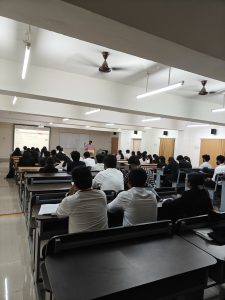
As the session wrapped up, he encouraged participants to enjoy TNNLU’s hospitality while taking necessary precautions against the unpredictable weather. The orientation not only reinforced known tools but also introduced new ways of maximizing SCC Online and EBC Reader for both mooting and legal research.
7:00 PM | Researcher Test | UG Block
After the Inauguration and the SCC Online and EBC Reader Orientation Session, the much-anticipated Researcher Test took place. This round was designed to check how well the participants understood Competition Law. The test focused on both their knowledge of legal concepts and their ability to apply them. Each researcher was given one hour to answer a set of questions that included both objective (like multiple choice) and subjective (like short and long answers) parts. The questions were thoughtfully prepared to test everything from remembering legal sections to thinking critically and writing clearly. The Researcher Test was an important step in the competition and helped set the tone for the challenging rounds to come.

23rd March 2024 (Day-2)
10:00 AM | Preliminary Round-I| UG and PG Block
Court Hall-I
The appellant sought permission to address Issue 1. However, before proceeding, the judges asked the counsel to first present the facts of the case. A question was also raised regarding the judgment of the Competition Commission of India (CCI), specifically under Section 86 of the Competition Act. Issue 2 was then taken up.
The judges questioned whether the CCI had sufficient data to support its findings, while the counsel for the appellant raised concerns regarding data privacy, citing relevant precedent judgments. Issue 3 was subsequently addressed, during which the judges requested real-life examples to support the arguments. The appellant provided appropriate examples in response. The appellant then brought up Issue 4 and Issue 5. The judges posed questions regarding data service collection; however, the discussion was briefly interrupted or left incomplete following which the prayer was then delivered by the appellant side.
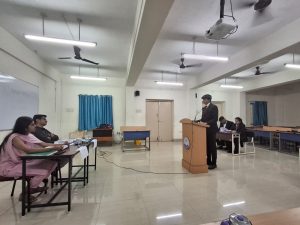
The respondent referred to Section 26(1) of the Competition Act, 2013, arguing that the law was not applicable in the present case, citing Google Inc. v. CCI. Nevertheless, the respondent acknowledged that the order has the potential to be reviewed or recalled. The judges then requested the procedural aspects related to Issue 2. Additionally, the judges asked what the CCI’s ultimate objective was in the case, which the respondent addressed.
The judges raised a question regarding the concept of consideration in the sale of goods and services, specifically in the context of abuse of dominant position, whether it applies to free services. The respondent directed the court to the written memo for further clarification. Following this, the judges requested a transition to Issue 5 after which the prayer was given by the respondent side. The court then opened the floor for rebuttals and sur-rebuttals.
Court Hall-II
In court the proceedings began with the appellants presenting their case, the counsel first challenged the investigation order, arguing it violated the natural justice principle as it fell outside the purview of the Competition Act’s scope, citing Section 26(1) and branding it void ab into. In Issue 2 it contested CCI’s jurisdiction over data privacy, relying on Harshit Chawla v Whatsapp Inc. and Karnataka Power Corporation Ltd. Moving forward the counsel denied CRETA’s dominant position, advocating for a broader market definition with an inclusion of all other SMS services. The Co-Counsel addressed Issues 4 and 5, referencing Matrimony.com Ltd v Google to argue data sharing practices and “take it or leave it’ policies lacked consumer harm, with judges probing the maintainability of appeals against preliminary orders.
The Respondent presented their case by firstly affirming CCI’s jurisdiction under CCI v Jindal Steel, dismissing appeals against investigate orders since it was statutorily unfounded. In the issue of dominance, it was contented that restrictive policies harm competition if revived. Issue 3 invoked doctrines of coercion and unconscionable contracts against CRETA’s terms. The co-counsel further challenged the dominant evidence while deferring detailed arguments on Issue 5 to submissions. Throughout the judges sought clarifications on market definitions and statutory interpretations, with references to mot proposition clauses guiding the discourse.
Rebuttals followed, particularly on jurisdictional overlaps and consumer harm criterion, the appellant reiterated that voluntary data consent and parallel services negated dominance abuse, while respondents stressed the majority on the procedural statutes in the CCI’s investigative mandate.
Court Hall-III
The session commenced with the judges asking the appellant to explain the factual background of the case. Counsel 1 for the appellant began the argument by contending that the Competition Commission of India (CCI) does not have the jurisdiction to intervene in this matter, as there already exist laws governing privacy policies. She questioned the necessity of CCI’s involvement in a case about a private contract and privacy policy concerns.
In response to a judicial query referencing the SEBI case, Counsel 1 distinguished the present matter by noting that SEBI had exclusive jurisdiction in that case, whereas the current dispute falls within the scope of a distinct legislative framework. The counsel further challenged whether the CCI’s jurisdiction was applicable in this context and concluded her submission with a prayer to quash the CCI’s investigation.
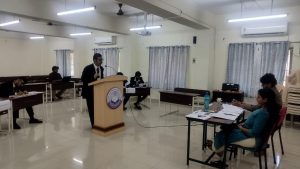
Subsequently, Counsel 2 for the appellant presented her arguments, relying on the NSE case. She contended that the CCI’s claims were insufficient to invoke Section 4 of the Competition Act, 2002. When the Bench inquired about the lack of an alternative option for users, Counsel 2 responded that the opt-out provision itself constituted a second option. She argued that the appellant’s business decisions did not infringe upon the users’ autonomy, as alternative applications serving similar functions were available in the market.
Addressing concerns regarding data collection, Counsel 2 maintained that user data was collected with the aim of improving user experience in future iterations of the product. When questioned about the fate of such data upon user deletion of the application, Counsel 2 stated that, although there exists factual support for this concern, all collected data would be deleted upon account deactivation. The appellants concluded their arguments with a formal prayer to discontinue the CCI’s investigation.
The respondent counsel then commenced their argument by asserting the legitimacy of the investigation, referring to Google LLC v. CCI. They emphasized that the CCI’s inquiry was part of a lawful statutory process and could not be quashed at this stage. The respondent argued that the ‘take-it-or-leave-it’ policy adopted by the appellant was indicative of a dominant market position and was being used exploitatively.
Counsel 2 for the respondent submitted that the appellant had misused its market leverage, constituting an abuse of dominance. Supporting this argument with relevant case law, the counsel attempted to establish that the appellant held a dominant position and that its practices amounted to abuse. The respondent concluded with a prayer urging the Court to allow the investigation to proceed.
In rebuttal, the appellant’s counsel argued that the provisions of the Data Protection Act should take precedence over the CCI’s jurisdiction. They further contended that the allegations presented by the respondent did not substantiate claims of abuse or even the existence of a dominant market position.
Court Hall-IV
Counsel for Creta Inc. began by challenging the legality of the Competition Commission of Indozia’s (CCI) suo moto investigation under Section 26(1) of the Indozian Competition Act (ICA), emphasizing its administrative character and non-appealability. Referring to Google v. CCI and the statutory hierarchy in Sections 53A and 53B, they argued that challenges to such orders must follow prescribed appellate routes, not writ petitions. On jurisdiction, Creta contended that data privacy concerns fall within the domain of specialized regulators like TRAI, not the CCI, citing CCI v. Bharti Airtel. They asserted that CCI’s intervention into telecom-linked issues—on the mere basis of SIM-enabled OTT messaging—amounted to regulatory overreach.
Turning to substantive competition law issues, Counsel 2 disputed the characterization of Creta as dominant under Section 4 of the ICA, arguing that market share alone is insufficient. Despite a 92% user engagement with Who’sUp, they pointed to significant multi-homing practices and the presence of thriving alternatives like Messengify and Telegraph. Counsel emphasized that dominance must be assessed in a global context under Sections 2(s) and 2(t), and that user reliance on Who’sUp is not absolute due to negligible switching costs. On the predatory pricing allegations, they dismissed zero-pricing as an industry standard, funded by ad revenues, citing WhatsApp LLC v. CCI, and stressed that innovation—not exclusionary tactics—explained Creta’s popularity.
In response, the CCI’s counsel asserted the Commission’s jurisdiction over data-driven market power, arguing that Creta’s control over user data and its integration across platforms like FameBook amounts to de facto bundling and foreclosure of competition. Citing CCI v. WhatsApp/Facebook, they argued that network effects and data monopolies negate the relevance of multi-homing, entrenching dominance. Counsel linked zero pricing to long-term user lock-in, highlighting the absence of granular opt-outs and coercive privacy terms as violations of Section 4. Judges actively engaged with both sides, probing whether traditional metrics suffice in digital markets and whether data reservoirs constitute structural entry barriers. While Creta portrayed its model as user-friendly and competitive, the CCI framed it as exploitative, warning that unchecked data-driven dominance undermines fair market access.
Court Hall-V
The issues addressed in the arguments were meticulously structured around the alleged contraventions under Section 4 of the Competition Act, 2002, setting a comprehensive legal context with the aid of relevant precedents and judicial queries. The statement of facts was elaborately laid out to provide clarity and foundation to the submissions. On Issue 1, the appellant strongly contended that an order passed under Section 26 of the Act is appealable, especially where procedural safeguards have been violated. Citing CCI v. Steel Authority of India, it was argued that the respondent failed to meet the prima facie standard required to initiate an investigation, and no opportunity was afforded to the appellant to opt for relevant applicable provisions under the Act. This directly affects the appellant’s procedural rights, thereby justifying the maintainability of the appeal.

With respect to Issue 2, the appellant questioned the jurisdiction of the Competition Commission of India (CCI), asserting that the Commission only possesses secondary or derivative jurisdiction in contractual disputes arising from mutually binding obligations. It was emphasized that such matters do not fall within the primary mandate of the CCI, which is to address practices that affect competition in the market. The argument was reinforced by judicial inquiries regarding the scope and statutory objectives of the CCI, to which the appellant responded by stressing that private contractual matters without broader market impact do not warrant CCI’s intervention.
On Issue 3, the appellant refuted the claim of dominance by demonstrating that the respondent does not hold a dominant position in the relevant market. In the absence of market dominance, the allegations of imposing unfair conditions under Section 4(2)(a) become unsustainable. The appellant argued that dominance must be established before conduct can be examined under Section 4. Moreover, on Issue 4, allegations of predatory pricing were challenged by citing Vinoth Kumar Gupta, asserting that zero-pricing models are not inherently anti-competitive but rather a strategy employed for market penetration and innovation. The two-pronged test, pricing below cost and intent to eliminate competition—was applied, and it was argued that the respondent’s conduct failed to meet either prong. Reference was also made to CCI v. Fast Track, which observed that even a high market share, as in the case of Ola, does not automatically imply predatory pricing due to the evolving and dynamic nature of digital markets.
In addressing Issue 5, the appellant denied any violation under Section 4(2)(e), asserting that no data sharing took place between the respondent and its affiliated entities in a manner that excluded competitors or distorted the market. Even acknowledging the submission of evidence by the opposing side, it was argued that the alleged data exchanges did not lead to coercion or exclusionary effects. The core argument emphasized that technological evolution and integration, absent anti-competitive intent or effect, should not be penalized. On the contrary, the respondent’s counter-arguments under Section 53A stressed that the order was not final and thus not appealable. They reiterated that the appellant has abused its dominant position through unfair practices, such as opaque pricing, control over user data, and restrictions on interoperability, resulting in a distortion of the competitive landscape. They urged that the appellant’s conduct is exclusionary and undermines consumer welfare, thereby attracting liability under Section 4 of the Competition Act, 2002.
Court Hall-VI
The appellants advanced their arguments by asserting that the relevant market in this case must be broadly construed as the market for digital communication services on a global scale, rather than being narrowly defined as the market for Over-The-Top (OTT) messaging applications in Indonesia. Emphasizing the global and dynamic nature of digital communication platforms, the appellant relied on Section 19(4) of the Competition Act to highlight key determinants such as low entry barriers, significant market volatility, and widespread multi-homing behavior among users. These factors, combined with the countervailing power of consumers, were used to argue that Creta does not enjoy a dominant position in the relevant market. However, the bench posed incisive questions, challenging the basis of this global market definition, especially in light of the jurisdictional limitations and the distinct characteristics that differentiate OTT platforms from conventional media channels. The judges also raised concerns regarding Creta’s free pricing model and questioned how it could be convincingly argued that such a strategy does not amount to an abuse of dominance.
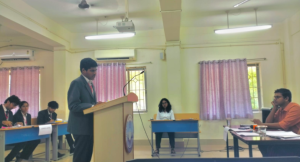
The respondents, on the other hand, were directed by the bench to limit their jurisdictional arguments to Section 53(d) of the Indozian Competition Act, rejecting their attempts to rely on the broader scope of Section 136. When questioned on the maintainability of the case, the respondents initially relied on CCI v. SAIL to argue that forming a prima facie view under Section 26(1) does not necessitate a hearing. However, the bench was quick to point out the outdated nature of the precedent and emphasized that Section 36 of the Act grants the Commission procedural autonomy. Furthermore, the judges reiterated the principle that special legislation overrides general laws, and dismissed the respondents’ justification under Section 18 of the Act that the Commission must act even in the absence of injury, especially when no consumer harm had been clearly demonstrated. The respondents’ attempts to invoke the broader public interest mandate of the CCI were met with skepticism in the absence of a demonstrable market injury or exclusionary outcome.
On the substantive issue of abuse, the respondents submitted that Creta had imposed a unilateral and arbitrary privacy policy on its users, constituting an abuse of its dominant position under Sections 4(2)(a)(i) and 4(2)(d) of the Indozian Competition Act. To establish dominance, they cited Umar Javed vs. Google LLC, asserting that the same principles applied to Creta due to its significant user base, market power, and control over user data. They argued that the imposition of non-negotiable privacy terms reflects a clear imbalance in bargaining power, thereby attracting liability under Section 4. However, their submissions struggled to overcome the judicial concerns regarding the absence of substantial market foreclosure or consumer injury an essential component in proving abuse of dominance under competition law.
Court Hall-VII
The appellants began their arguments by asserting that the present appeal is maintainable under Section 53(d) of the Competition Act. Speaker 1 contended that the order passed under Section 26 of the Act is indeed appealable and that the Competition Commission of India (CCI) had overstepped its jurisdiction by initiating an investigation without satisfying the necessary threshold. Emphasizing the procedural overreach, the appellant argued that a mere prima facie opinion cannot be a basis to invoke intrusive regulatory action without due application of mind. Building on this, Speaker 2 defended Creta’s business model, clarifying that zero pricing is a legitimate marketplace strategy, especially common in oligopolistic digital markets. They stressed that the Competition Act does not impose a lower limit on price and that “price” can be of any ascertained value. On the issue of data sharing, the appellant submitted that the conduct in question did not result in a foreclosure of the market and therefore, did not amount to an abuse of dominant position. The judges appeared to agree with the legal premise that mere dominance is not punishable under the law unless it is abused, citing the example of TASMAC in Tamil Nadu to reinforce the distinction between being dominant and abusing that position.
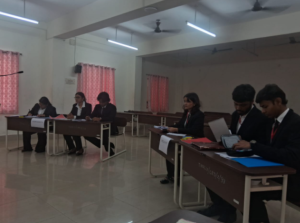
On the other hand, the respondents alleged that Creta was engaging in unfair trade practices that effectively distorted consumer choice and competition. Speaker 1 argued that the supposed “choice” to migrate to other platforms is illusory, as most users are compelled to remain on Creta due to network effects—people naturally gravitate to apps that their friends and families use, leaving little room for effective alternatives. They contended that in the digital ecosystem, data operates as currency, and Creta’s massive accumulation of user data places it in a position of overwhelming advantage, thereby creating conditions that make it nearly impossible for new entrants to compete. However, judges questioned the logic by pointing out that if Creta were truly dominant, it would have led to a complete foreclosure of competitors, which had not occurred. The bench also asked whether horizontal mergers, in themselves, could be objected to, and reminded the respondents that competition law targets anti-competitive effects, not mere business success.
Speaker 2 of the respondents added that the zero-pricing model of Creta’s new app, Who’s Up, cannot be compared with other zero-pricing strategies, suggesting that Creta’s model involved coercive trade-offs, particularly in terms of data privacy. They argued that users should be able to opt out of specific intrusive policies rather than being forced into an “all-or-nothing” situation. This bundled imposition of policies, according to them, resulted in a lack of genuine user consent and amounted to unfair conditions under Section 4(2)(a)(i) of the Competition Act. Despite these submissions, the bench appeared unconvinced about the existence of actual consumer harm or market foreclosure, suggesting that the threshold for establishing abuse of dominance may not have been met in the present matter.
Court Hall-VIII
In the matter at hand, the appellants began by narrowing their scope to Issues 1 and 2, contending primarily with jurisdiction and the alleged abuse of dominance. Speaker 1 emphasized that the data regulation concerns fall under the domain of the Data Protection Authority as per Section 43A of the Information Technology Act, arguing that the Competition Commission of India (CCI) had exceeded its jurisdiction. They challenged the respondents’ vague definition of the relevant market and criticized the CCI’s reliance solely on market share to determine dominance. Speaker 2 contended that the CCI’s order lacked factual basis and that CRETA’s conduct did not constitute abuse of dominance. They cited case law to assert that the dominant position must be accompanied by intent and demonstrable harm to competition, neither of which were evident. It was further submitted that data sharing, as practiced by CRETA, does not in itself amount to anti-competitive behavior. The appellants ultimately sought the setting aside of the CCI’s order due to jurisdictional overreach and lack of substantive evidence.
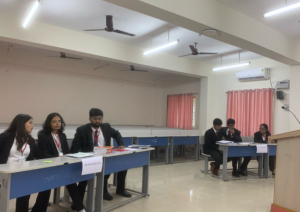
The respondents, on the other hand, addressed all five issues and strongly defended the CCI’s authority and findings. Speaker 1 invoked Section 21A of the Competition Act to establish the CCI’s jurisdiction, arguing that statutory provisions must be interpreted in their natural and literal sense. They advanced the position that CRETA’s immense financial strength, cross-platform presence, and control over user data render it dominant in the market. On Issue 3, they pointed to entry barriers and distinctions between CRETA and competing apps, arguing that these apps do not operate in the same relevant market. Speaker 2 built on this by asserting that CRETA’s zero-pricing strategy coupled with mandatory data sharing amounted to predatory pricing, creating artificial barriers to entry. Respondents also highlighted CRETA’s dominance in the adjacent advertising market, asserting that its data-driven cross-subsidization strategy excluded rival advertisers, thereby distorting fair competition. They prayed for the continuation of CCI’s investigation and recognition of CRETA’s abusive conduct.
In rebuttals, the appellants questioned the credibility of the respondents’ sources and reiterated that the relevant market had not been precisely defined. They also contended that principles of natural justice are primarily applicable at the preliminary stage. In response, the respondents maintained that natural justice principles apply throughout the adjudicatory process and defended the CCI’s conduct as one based on reliable and credible information. The judges provided constructive feedback to both teams, urging them to maintain composure and prioritize clarity over speed. They stressed the importance of well-structured arguments and clear articulation to ensure effective communication in a competitive adjudicatory setting.
Court Hall-IX
The Appellant team raised pertinent legal concerns, particularly by drawing parallels with the Google v. CCI judgment and arguing the applicability of the newly enacted DPDP Act, 2023. Their emphasis on principles of natural justice and the argument that the matter should be agitated through a writ rather than before the Competition Commission was interesting, although not fully developed. The team sought to rely on adverse civil consequences under EX PDI rules but seemed less prepared to address the judge’s shift in focus to the DPDP Act. Their attempt to question CCI’s jurisdiction by placing the matter under the IT Act reflected a good grasp of the overlapping regulatory framework but needed more clarity on statutory interpretations.
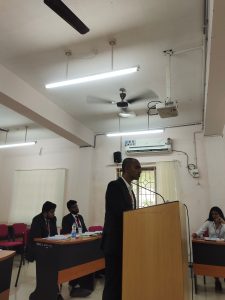
On the other hand, the Respondents offered a more structured legal defense. They began by defending CCI’s jurisdiction under Section 26(1) of the Competition Act and argued the statutory bar on appealing such orders through Section 53A, rightly invoking the precedent of CCI v. SAIL. They provided a layered response on the applicability of data protection within competition law, positioning the CCI’s interest in consumer welfare as a complementary, secondary lens rather than a usurpation of the DPDP’s primary authority. Their use of technical market tests like SSNIP and SSNIPQ to define the relevant market showed sound conceptual understanding, although their application in a zero-price digital market was not entirely convincing. Their reliance on Matrimony v. Google to explain leveraging dominance across markets was well-placed, though it required more factual tailoring.
Both teams displayed promising arguments but would benefit from improved advocacy skills. The Appellants must focus more on foundational understanding and cohesive structuring of arguments, as well as maintaining the courtroom decorum, especially during the prayer. The Respondents, while better on legal points and articulation, need to develop the ability to tactfully address difficult questions without disengaging. Overall, the round reflected a good grasp of competition law and data protection but underscored the need for more polished delivery and confident handling of judicial interventions.
Court Hall-X
The Appellant team commenced with a well-structured argument focusing on jurisdictional limitations of the Competition Commission of India (CCI). Speaker 1 contended that CCI, under Section 26 of the Competition Act, 2002, does not possess the legislative authority to regulate data protection issues, which rightly fall within the scope of the IT Act, 2000. They also argued that the power to order an investigation under Section 36 is more administrative in nature, thus making the order appealable. On the issue of subject-matter jurisdiction, it was submitted that the CCI is statutorily mandated to deal with anti-competitive practices like cartels and trusts, not privacy and data security concerns.
Speaker 2 shifted the focus to market dynamics and abuse of dominance, contending that no violation of Section 4(2)(a)(i) had occurred. It was argued that a broader interpretation of market share must be adopted due to the diversity of internet services offered by the Appellant, and that users had viable alternatives, ensuring a competitive market. However, when confronted with the fact that 92% of users regularly used the Appellant’s service, the response was a speculative argument about double-counting and the absence of verified data on dedicated users. In conclusion, the Appellant prayed that the CCI’s order be deemed appealable, its jurisdiction be struck down, and that no abuse of dominant position be found.
The Respondents countered effectively by clarifying that the CCI had only formed a prima facie opinion and had not adjudicated any rights or obligations, thus maintaining procedural propriety under CCI v. SAIL. They emphasized that no appeal mechanism exists against such an order due to deliberate legislative omission. On merits, they argued that the Appellant’s overwhelming market control and revenue, paired with user reliance, indicate clear dominance. Speaker 2 cited KS Puttaswamy v. Union of India to underline the violation of privacy rights through the Appellant’s coercive “take it or leave it” policy. Though questioned by the bench on consumer choice, the Respondents held that such policies distort free consent. Finally, reliance on DLF v. CCI and arguments on predatory zero pricing, though challenged by the judge, showcased the Respondents’ effort to connect market structure with exploitative practices.
Court Hall-XI
The proceedings commenced with Counsel 1 from the Appellants’ side, who began directly with the legal arguments as the Bench was already well-versed with the factual matrix of the case. The judges adopted a proactive and interactive stance, posing a series of pointed questions throughout the submission, which Counsel 1 responded to while advancing his contentions regarding the jurisdictional limitations of the Competition Commission of India and the nature of the investigation under Section 26 of the Competition Act, 2002.
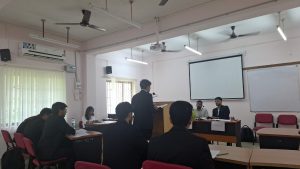
Counsel 2 for the Appellants then took the dais, primarily addressing the issue of Creta’s alleged dominance in the relevant market. He responded to the queries raised by the Bench with reference to market structure, user alternatives, and the applicability of Section 4. Upon requesting additional time, he was granted a two-minute extension, during which he concluded the arguments with a structured prayer, emphasizing the lack of jurisdiction and denial of abuse of the dominant position.
Subsequently, Counsel 1 representing the Respondents began his arguments, continuing the momentum of the session with active engagement from the judges. He was also permitted additional time to fully respond to the questions, especially concerning the nature of the prima facie investigation and the legislative intent of the Competition Act. Counsel 2 for the Respondents concluded with a crisp and focused summary, complying with the Bench’s directive to manage time efficiently. The rebuttal and sub-rebuttal rounds ensued thereafter, with the Appellants raising key questions, which were effectively addressed by the Respondents, marking the conclusion of the session.
11:30 AM | Preliminary Round-II| UG and PG Block
Court Hall-I
The counsel for the appellant began by requesting to proceed directly with Issue 1, as the facts of the case had already been clearly presented. Upon commencing, the judges inquired about the basis of the appellant’s right to appeal. In response, the appellant referred to the relevant provisions, although the judges pointed out that orders under Section 26(1) of the Competition Act are generally not appealable. The appellant countered this by invoking Section 53A of the Act and referenced a precedent case to support the argument. When the judges asked for evidence supporting the claim, the appellant directed them to the facts outlined in the case memorial.
The discussion then moved to Issue 3, where Section 19(4) of the Competition Act was brought up. The appellant denied the allegation of abuse of dominance but admitted to holding a dominant position in the market. The judges sought further clarification on the factors listed under Section 19(4), which the appellant addressed accordingly. A precedent judgment in the memorial was cited by the appellant in response. Following this, Issue 4 was taken up, and the appellant concluded their submissions by delivering the prayer.

The respondent began by challenging the maintainability of the appeal under Issue 1, asserting that orders under Section 26(1) are not appealable. The judges acknowledged that although judgments have permitted appeals under Section 26(1), such appeals may not always be entirely applicable. The respondent argued that an alternative approach, such as a writ petition, could have been pursued. The judges then directed the respondent to proceed with Issue 2.
During submissions on Issue 3, the respondent argued that all relevant provisions fall under Section 4 of the Competition Act. When asked by the bench about the nature of consideration, the respondent stated that any valuable consideration, including consumer-provided data, could be included. Section 4(2)(d) was referred to to summarize the remaining issues. The respondent concluded with their prayer. The court was opened for rebuttals and sur-rebuttals.
Court Hall-II
The Appellants commenced their arguments by challenging the validity of the CCI’s investigation order issued under Section 26(1) of the Competition Act. They argued that although the order was styled as administrative, it had substantial reputational consequences for CRETA. While the bench insisted that such an order was merely procedural and not determinative of guilt, the Appellants emphasized that reputational harm stemming from a public investigation could not be overlooked. The judges scrutinized the jurisdictional logic behind this argument, questioning the basis for distinguishing between Sections 26(1), 26(2), and 26(3) in the absence of a completed enquiry, and probed into the rationale for seeking a review against the CCI’s investigative wing itself.
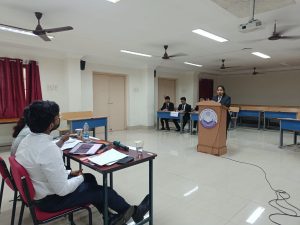
Shifting to Issue 2, the Appellants argued that CRETA’s conduct did not amount to abuse of dominance under Section 4. They claimed that the company’s data-sharing policy and business practices were industry standard and not coercive. However, the bench questioned the fairness of the “take-it-or-leave-it” policy, especially after market dominance had been firmly established. The Appellants attempted to invoke the doctrine of coercion to argue a lack of harm, but the judges noted that mere inconvenience to users did not meet the threshold for coercion, nor did intra-group data-sharing amount to anti-competitive cartel-like behavior. Due to time limitations, Issues 4 and 5 were touched upon only in summary, with the Appellants reiterating that their practices remained within legal bounds.
Respondents, in reply, argued that the Section 26(1) order was a preliminary administrative step intended only to authorize the Director General’s investigation, and hence was non-justiciable. They asserted that CRETA’s dominance stemmed from its extensive control over user data and entrenched consumer dependence. The judges raised questions about jurisdictional overlap, acknowledging that concerns under Article 21 (privacy) and the Competition Act were not mutually exclusive. Respondents, relying on CCI v. SAIL and Telephone LLM v. CCI, affirmed that competition authorities could investigate even if parallel legal violations existed. In closing, co-counsel for the Respondents emphasized the collateral harms caused by CRETA’s practices—especially for small businesses facing the loss of contacts and operational access—arguing that these reflected an abuse of dominance through predatory and coercive policy structures. The hearing concluded with lingering tensions over the balance between regulatory boundaries and market fairness.
Court Hall-III
The session opened with the appellant arguing that the appeal had been filed under the Companies Act, a position that was immediately challenged by the Bench. The judges questioned the relevance of invoking the Companies Act when the facts of the case appeared more squarely within the ambit of the Competition Act or the Data Protection Act. This initial line of questioning seemed to unsettle the appellant’s counsel, who was momentarily unprepared to justify the legal basis of their appeal. Attempting to redirect the argument, the counsel submitted that the matter was more appropriately governed by the Data Protection Act and therefore outside the jurisdiction of the Competition Commission of India (CCI). They further cited international competition practices to reinforce the argument that mere dominance in a market does not automatically translate to abuse under competition law.
Continuing, the appellant maintained that Creta had not imposed any coercive contractual obligations on its users. However, the Bench intervened to explain how the Competition Act, 2002, interprets dominance and its abuse, indicating that the counsel may have misapprehended key provisions. The second speaker for the appellant defended Creta’s zero-pricing policy, stating it did not constitute predatory pricing. In a pivotal moment, the Bench highlighted that the actual “price” consumers pay could be their personal data. The appellant conceded this point, inadvertently reinforcing the respondent’s central argument. Though the appellant cited the Amazon case to distinguish between aggressive and malicious strategies, the Bench steered the discussion back to the primary issue—whether data was being utilized to consolidate a dominant market position. When pressed on the potential misuse of data, the appellant denied any wrongdoing, but the judges pointed to their own memorandum, which disclosed the transfer of user data across applications within the same corporate structure—raising questions of anti-competitive behavior.
In response, the respondents firmly established the CCI’s jurisdiction under the Competition Act and underscored the Director General’s investigative powers. The co-counsel meticulously broke down Section 4 of the Act, demonstrating how Creta’s actions satisfied the statutory elements of abuse of dominance, particularly by leveraging user data to entrench its market position. Relying on Section 18 of the Act, the respondent emphasized the CCI’s duty to safeguard consumer interests and ensure fair market competition. They concluded with a prayer to formally recognize the appellant’s conduct as constituting an abuse of dominance and urged the Bench to pass appropriate remedial directions. The round ended with rebuttals from both sides, where each attempted to repair weaknesses in their submissions. The Bench commended the counsels for their efforts and concluded the session.
Court Hall-IV
The Appellants opened their submissions by challenging the validity of the CCI’s investigation order under Section 26(1), arguing that although labeled administrative, such orders carried significant reputational implications for CRETA. Counsel contended that these orders, when publicly issued, disrupted business operations and public perception, moving beyond mere procedural functions. However, the bench maintained that Section 26(1) was an administrative mandate to initiate investigation and did not amount to a finding of guilt. In response, the Appellants insisted that administrative action could not be divorced from its reputational impact and questioned whether CCI’s procedural discretion had been exercised fairly. The judges pressed further, asking how reputational harm could be established without a completed enquiry, and why the Appellants chose to challenge the investigative order directly, given the availability of appellate remedies under the statute.
Addressing the substantive issues of dominance and coercion under Sections 4 and 3, the Appellants denied any abuse of a dominant position by CRETA. They argued that their platform’s data policies were not coercive or monopolistic, claiming that users voluntarily accepted terms in exchange for free services. However, the judges scrutinized the “take-it-or-leave-it” nature of these policies, especially since they were implemented after CRETA had firmly established market dominance. When co-counsel invoked the doctrine of coercion to counter this claim, the bench questioned whether mere inconvenience or data-sharing with subsidiaries could meet the legal threshold for coercion or cartelization. As time ran short, Issues 4 and 5 were summarized without extensive argumentation, maintaining the Appellants’ position that no statutory abuse had occurred.
In response, the Respondents argued that the Section 26(1) investigation order was a non-justiciable administrative action targeting only the Director General’s investigative wing. Citing CCI v. Steel Authority of India, they asserted that unfair trade practices fell squarely within the CCI’s remit. When the bench asked about the interaction between privacy rights under Article 21 and competition law, the Respondents emphasized that both could coexist and be addressed simultaneously. On the issue of dominance, they relied on Telephone LLM v. CCI to assert that parallel privacy violations did not dilute CCI’s jurisdiction. The co-counsel further highlighted how CRETA’s restrictive policies adversely impacted small businesses, stripping them of essential contacts and data access despite nominal alternatives. The judges challenged whether CRETA should be allowed unregulated autonomy over such impactful practices. The session concluded with a brief mention of predatory pricing, with the Respondents alleging that CRETA had used its dominant position to undercut competition, thereby reinforcing the charge of abuse under Sections 3 and 4.
Court Hall-V
Speaker 1 began by briefly laying out the facts to provide context for the Bench before delving into Issue 1 regarding the jurisdiction of the Competition Commission of India (CCI). It was argued that the matter at hand primarily concerns personal data, which falls within the regulatory framework of the Digital Personal Data Protection (DPDP) Act and therefore, within the jurisdiction of the Data Protection Board, not the CCI. The speaker emphasized that data processing and protection are specialized domains governed independently of competition law. Responding to a judge’s hypothetical — “Assuming you are in a dominant position, what would your response be?” — the speaker submitted that dominance alone is not penalized under Section 4(2) of the Competition Act, 2002, and that liability arises only upon establishing abuse of that dominance.
Speaker 2 continued by focusing on the pricing behaviour of the appellant firm. It was contended that the company’s pricing strategies are competitive, not predatory, and do not fall under the purview of abusive conduct as outlined in Section 4. He cited the decision in Bageshwar Aakash Kumar v. Google LLC, where the Commission found no predatory pricing despite aggressive pricing strategies. The speaker argued that in digital markets, such strategies are part of normal commercial behaviour and should not be mischaracterized in the absence of satisfying strict legal tests. Additionally, it was submitted that the statistical data presented by a China-based NGO lacks credibility and cannot serve as reliable standalone evidence unless supported by independent sources. The speaker also referenced SAIL v. CCI to assert that the mere direction to investigate is administrative and not prejudicial, and thus appealable, stressing that procedural fairness must be maintained.
In response, the Respondents argued that the appeal should be dismissed. Counsel for the Respondents submitted that a plain reading of Section 53A of the Competition Act, 2002, reveals that an appeal does not lie from an administrative direction such as an order to investigate. Allowing such appeals would frustrate the purpose of the Act by delaying investigations. It was asserted that the appellant firm, through its “take-it-or-leave-it” opt-out clause, effectively coerces users into continuing with the service, thereby abusing its dominant position as per Section 4. It was argued that network effects lock users into the platform and create switching barriers, amplifying the abuse. The excessive and non-transparent privacy policy further entrenches this unfair condition. Referring to Uber v. CCI, the speaker stated that sustained predatory pricing itself indicates dominance, especially when it results in exclusionary effects. In conclusion, the Respondents prayed for dismissal of the appeal, submitting that the CCI’s order of investigation was appropriate and backed by sufficient prima facie material, thus warranting no interference.
Court Hall-VI
The Appellant’s case opened with Speaker 1 invoking the Supreme Court’s decision in Barium Chemicals Ltd. v. Company Law Board, emphasizing the principle of audi alteram partem and procedural fairness. The Bench, however, persistently questioned the maintainability of the appeal, asking why the appellants had not opted for a review instead. In a moment of levity, Speaker 1 candidly replied that the course of action was dictated by the moot proposition itself, eliciting laughter from the Bench and the courtroom, momentarily easing the intensity of the proceedings. This humorous interjection helped set a relaxed tone before returning to substantive legal discussions.
Speaker 2 from the Appellant’s side began by admitting Creta’s dominant position in the market but firmly denied any abuse of that dominance. She argued that mere dominance does not attract liability under the Competition Act unless accompanied by abuse, as outlined under Sections 4(2)(a)(i) and 4(2)(d). When questioned about data collection practices and the necessity of cookies, she submitted that Creta’s updated privacy policy does not impose any unfair conditions or supplementary obligations upon its users. On the matter of the 0-pricing model, it was argued that such a pricing strategy, while aggressive, is not predatory per se unless it results in exclusionary or anti-competitive effects, which must be proven through economic evidence.
Turning to the Respondents, Speaker 1 asserted that the order passed by the Competition Commission of India (CCI) under Section 26(1) of the Competition Act is purely administrative and hence, not appealable before the National Company Law Appellate Tribunal (NCLAT). When pressed by the Bench on compliance with Section 36 procedural requirements, the Respondents argued that since the order lacks any final determination, procedural violations, if any, do not prejudice the parties. Speaker 2 of the Respondents was questioned on the definition of the relevant market and the appropriateness of restricting it to Indozia rather than a global perspective. In response, she cited Alsatel v. Novasam SA, arguing that the relevant geographic market must reflect where the conditions of competition are sufficiently homogeneous—conditions which are satisfied only within Indozia, making it the appropriate market for competition law analysis.
Court Hall-VII
The Appellant’s case commenced with Speaker 1 asserting that the actions of the Competition Commission of India (CCI) amounted to a violation of Creta’s constitutional right to trade or business under Article 19(1)(g) of the Constitution. It was argued that Creta was not afforded a proper opportunity to be heard, thereby breaching the principles of natural justice. The speaker further maintained that the right to appeal before the appropriate Bench is a statutory remedy, and thus, the current proceedings are maintainable. Emphasizing that users had provided informed consent regarding data usage, the speaker contended that no unfair practices were involved that would warrant CCI’s intervention.
Speaker 2 for the Appellants built upon this by emphasizing that users were given reasonable time to review the platform’s updated guidelines and that there was no compulsion to continue using the services. This, it was argued, negated any claim of imposition or abuse of dominant position under the Competition Act. She further submitted that there was no prima facie case to warrant an investigation, especially as the matter did not squarely fall within the jurisdiction of the CCI but rather under the purview of data protection laws. Hence, invoking CCI’s jurisdiction in this case would amount to regulatory overreach.
In contrast, the Respondents argued that the jurisdiction of the CCI could not be excluded merely because another specialized statute, such as the Digital Personal Data Protection Act, exists. Speaker 1 highlighted that the cumulative effects of Creta’s dominance in the digital networking space were leading to clear abuse, particularly through the imposition of obligations on users to share data not just with Creta but also its subsidiaries. Relying on the principle of expressio unius est exclusio alterius, the speaker submitted that the express provision of jurisdiction to the CCI under the Competition Act overrides any implied exclusion. Speaker 2 further strengthened the Respondent’s stance by pointing to the existence of high entry barriers, cross-subsidisation, and exclusionary tactics employed by Creta. She cited the France Telecom case to argue that Creta’s conduct was predatory in nature and designed to stifle competition, thereby constituting a clear abuse of its dominant position under Section 4 of the Competition Act.
Court Hall-VIII
The appellant began their submissions by clubbing Issues 1 and 2 together, challenging the very basis of the investigation ordered by the Competition Commission of India (CCI). Speaker 1 argued that the statutory scheme under the Competition Act mandates the presence of a prima facie case before an investigation can proceed, and in the current matter, such a threshold was not met. It was contended that the data usage by CRETA was consumer-centric, aimed at improving services, and thus furthered market efficiency rather than harming competition. The speaker maintained that CRETA operated competitively alongside other players and that mere dominance, without abuse, does not attract liability under the Competition Act. Speaker 2 followed up with arguments on anti-competitive practices and entry barriers, asserting that CRETA’s free service model was common in the market and driven by customer satisfaction—not predatory intent. It was submitted that rather than stifling competition, CRETA’s operations encouraged innovation, and the services operated in different relevant markets, weakening the allegation of abuse of dominance.
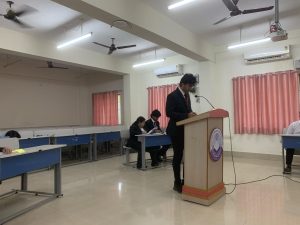
The respondents countered these submissions by first questioning the maintainability of the appeal itself. Speaker 1 argued that the CCI’s order to initiate an investigation was administrative in nature, and thus not appealable at this stage. Further, it was strongly submitted that the CCI was well within its jurisdiction, especially when the implications of a privacy policy veer into the realm of anti-competitive effects. Speaker 2 took up the remaining issues, stating that CRETA’s practices effectively locked users into its ecosystem due to high switching costs and vague consent mechanisms. The respondent highlighted that CRETA’s dominant position was being leveraged across platforms—specifically OTT messaging (Who’sUp) and digital advertising (Famebook and Instafame)—through internal data sharing, thereby raising artificial entry barriers. The combination of market entrenchment, cross-platform integration, and strategic use of personal data amounted to a clear abuse of dominance under Section 4 of the Competition Act.
In the rebuttals, the appellants questioned the clarity of the relevant market definition and argued that users had the freedom to opt out, thus negating any claim of coercion or unfair advantage. The respondents responded by affirming that the relevant market was specifically the OTT messaging space, and emphasized that the consent mechanism employed by CRETA was misleading and insufficiently transparent. The judges concluded the session with constructive feedback for both teams, urging them to adopt a slower pace and more composed delivery to enhance clarity. Importantly, the judges reminded both sides of the need to respond to the Bench’s queries directly and thoroughly, noting that evasion or incomplete answers significantly weakened the effectiveness of their arguments.
Court Hall-IX
The appellant’s side raised significant arguments around procedural irregularities and jurisdiction, contending that the order of investigation by the CCI violated the principles of natural justice and infringed on their fundamental rights under Article 19(1)(g) of the Constitution. Speaker 1 stressed that a prima facie case was never established, and thus, the probe itself lacked legal footing. He further stated that CRETA’s conduct did not constitute abuse of dominance and that data practices were consumer-friendly and compliant with regulatory norms. However, the bench questioned the appellant’s understanding of constitutional and civil consequences, market share relevance, and the lack of clarity in their justifications. Speaker 2 focused on dominance and relevant market definitions, citing case laws and the Raghavan Committee Report. However, several arguments, including those invoking Puttaswamy and sections of the Competition Act, lacked coherence or were withdrawn when challenged, which led to critical gaps in persuasion.
The respondent team approached the matter with a structured defense of the CCI’s jurisdiction and the maintainability of the order under Section 26 of the Competition Act. Speaker 1 distinguished the nature of the order as administrative rather than adjudicatory and backed it with judicial precedents like Padmasundara Rao and MCX v. MSEI. He emphasized the discretionary power of the CCI and its role in supplementing privacy regulation in competitive markets, quoting CCI v. Bharti Airtel. Speaker 2 effectively outlined CRETA’s dominance in the OTT messaging market and highlighted consumer dependence and data practices that allegedly created entry barriers. While the judges pressed for concrete proof of market dominance, the speaker leaned on user behavior, switching costs, and network effects. The arguments on the platform’s pricing policy and cross-market data exploitation were backed by relevant memo references and case laws, although the discussion on the DPDP Act and non-personal data regulation stirred nuanced legal debate.
In rebuttal, the appellants focused on the ambiguity in market definition and rejected the claim of abuse of dominance, arguing that users retained choice and CRETA’s practices were not anti-competitive. The respondents clarified their stance on relevant market demarcation and reiterated concerns around passive consent mechanisms and user lock-in. The sur-rebuttal by the appellants challenged the application of the DPDP Act, asserting its non-implementation and the overreach of the CCI. In terms of feedback, the judges pointed out the lack of preparation and research depth on the appellant’s part, while also noting occasional overconfidence and misinterpretation of legal principles by the respondents. Both teams were urged to address judicial queries directly and ground their claims in clearer legal reasoning, especially in areas involving regulatory overlap and contractual privity.
Court Hall-X
In the first leg of the arguments, Appellants’ Speaker 1 contended that the impugned order under Section 26 of the Competition Act is merely administrative in nature, as reiterated in CCI v. SAIL, and though it must adhere to the principles of natural justice, such adherence must be proportionate to the nature and power of the authority, drawing strength from Canara Bank v. Devadas. The core argument revolved around the claim that there was no application of mind by the Commission, given that the new privacy policy had been operational for a significant time without regulatory scrutiny. Further, regarding Issue 2, the speaker maintained that while CCI has jurisdiction, the Data Protection Laws do not exclude the Commission’s role in scrutinizing data-driven market behaviors. They argued that the one-sided imposition of a policy leading to a “lock-in effect” undermines consumer autonomy and violates the competitive structure of the digital market.
Appellant’s Speaker 2 expanded upon the dominance aspect, stating that a 92% market share does not reflect a healthy competitive environment and that the lack of opt-out options from the privacy policy exacerbates this dominance, amounting to abuse. The speaker argued that the dominance held in the communication services market was now being stretched into the advertising ecosystem, creating structural unfairness. The issue of collective dominance was raised to highlight how such policy changes, when implemented unilaterally, undermine consumer consent and foster market distortion. While the CCI’s jurisdiction was admitted under Google v. CCI, it was argued that alternative, less intrusive measures, such as interim relief, could have been employed instead of ordering a full probe. The appellant further raised double jeopardy, suggesting that the firm is being targeted under overlapping legal frameworks unjustifiably.
On the matter of zero-pricing strategy, Speaker 2 contended it is a standard industry practice and cannot be considered predatory per se. The speaker argued that privacy policy updates are not, in isolation, an abuse of dominance, drawing from judicial precedent. In response to the Bench’s concern regarding the absence of an opt-out, the appellant cited the Delhi High Court, claiming that account deletion constitutes a valid opt-out mechanism and that users are free to shift to competitors. It was further stated that the data collected is solely for personalization purposes, and that such collection is not unlawful, especially when balanced against service quality improvements. The integration of services was defended as a legitimate business strategy, and the speaker concluded by asserting that the order lacked application of mind, especially given the lack of understanding about the nature of the data in question. A formal prayer was made, and submissions were closed.
Court Hall-XI
The session in Court Hall 11 commenced with a formal welcome address by the bench clerk, who introduced the participating teams and the esteemed panel of judges, Mr. S. Chandrashekhar and Mr. Revnath Ashok. Counsel 1 for the Appellants opened the floor by outlining the core issues of the case, receiving an engaged response from the bench that prompted further elaboration. Shifting focus to Issue 2, Counsel 1 submitted that no abuse of dominant position had occurred. After concluding her submissions, Counsel 2 for the Appellants addressed the allegation of abuse of dominance by Creata, referencing case law to support their position. When the bench raised concerns regarding data collection and its potential to reinforce market dominance, Counsel 2 responded by asserting that the data was used solely to enhance user experience. The bench, however, questioned the fairness of the “take-it-or-leave-it” policy, emphasizing the need for user autonomy in data sharing. The Appellants then proceeded to present their prayer before the bench.
Counsel 1 for the Respondents began by asserting that Creata’s actions amounted to a violation of fundamental rights. He then addressed the second issue, delving into case law and discussing the delineation of the relevant market to demonstrate the firm’s dominance. Upon concluding, he handed over the floor to Counsel 2, who argued that consumer welfare lies at the heart of competition law. She contended that Creata’s data practices were exploitative and infringed upon user rights, asserting that the absence of meaningful consent mechanisms reflected an abuse of dominance. She relied on established precedent to argue that excessive and non-transparent data collection, especially without opt-out provisions, undermines user choice and market fairness. Counsel 2 concluded with a summary and formally stated the Respondents’ prayer.
The proceedings were rounded off with a session of rebuttals, during which the Appellants addressed several key points raised by the Respondents. They defended their stance on data usage, reiterated that no legal provisions were violated, and emphasized that service integration and personalization are lawful market practices. The judges posed follow-up questions during rebuttals, seeking clarification on specific arguments related to user consent and market structure. The round closed with both sides having articulated their positions in detail, leaving the matter to the learned judges for consideration.
TEAMS QUALIFYING FOR THE QUARTER-FINAL ROUNDS ARE-
T-10
T-14
T-23
T-06
T-09
T-13
T-15
T-08
4:00 PM | Quarter Final Rounds| UG Block
Court Hall-I
The round began with the Appellants’ counsel seeking permission to approach the dais and address the bench collectively. They began by establishing jurisdiction from the Appellant’s side and briefing the judges on the facts. The speaker explained that the matter concerned digital companies under “Creta” offering internet-based services, including messaging and photo-sharing apps. The central issue arose from “Who’s Up” updating its privacy policy and mandating users to accept it by February 15, leading the CCI to club similar matters and order an investigation. The Appellants framed five issues, which were divided between two speakers.
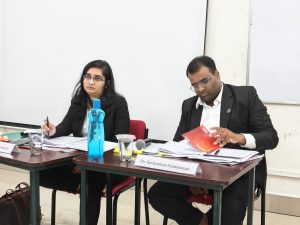
Speaker 1 addressed the first two issues, primarily arguing that the CCI lacked jurisdiction and had failed to establish a prima facie case under Section 26(1) of the Competition Act. The speaker emphasized that the investigation order relied on media reports, which are inherently unreliable, citing Laxmi Raj Shetty v. State of Tamil Nadu. The judges challenged the speaker’s interpretation of “prima facie” and questioned the relevance of criminal procedural law in the context of competition law. Despite time constraints, the speaker highlighted that unfair terms alone cannot be a grounds for investigation without an analysis of market effects. The judges disagreed but allowed the speaker to move to the second issue.
On the issue of jurisdiction, the speaker argued that privacy concerns fall under the purview of data protection authorities, not the CCI, referencing the Bharti Airtel v. CCI judgment. The speaker contended that CCI is ill-equipped to handle such concerns without the involvement of a sectoral regulator. The judges, however, rebutted by pointing out that the Data Protection Act is not in force, and in the absence of a specific regulator like TRAI in Airtel’s case, the CCI is empowered to act. The speaker tried to strengthen the point using international jurisprudence from German courts under GDPR but was challenged again for drawing improper analogies. A detailed reading from their compendium was presented but failed to convince the bench of the CCI’s lack of jurisdiction.
Speaker 2 took up the remaining three issues. He argued that the relevant product market for “Who’s Up” was not just limited to OTT messaging apps and emphasized that alternative apps were available. However, under judicial scrutiny, the speaker conceded that no single app offered the comprehensive feature set of “Who’s Up,” weakening the substitutability argument. Market share figures were cited from a Chinese NGO report, which the judges found untrustworthy due to a lack of sampling and credibility. The speaker defended that even without relying on the data, the presence of competitors like Telegram indicated a lack of dominance.
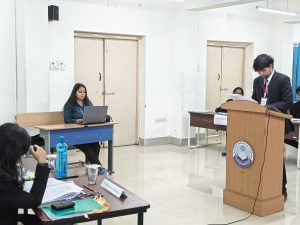
Finally, the speaker addressed the “take-it-or-leave-it” nature of the privacy policy and its impact on consumers. He argued that the 45-day acceptance period allowed users time to make an informed decision. However, the judges pressed the point that users had no real alternative but to accept the terms or leave the platform, suggesting abuse of dominance under Section 4. The speaker struggled with questions around compliance with the DPD Bill and GDPR, and failed to establish clarity on regulatory frameworks. The round concluded with the speaker emphasizing that no competitors were harmed and that Creta’s business model was legitimate, before proceeding to the prayer.
Court Hall-II
The appellants launched their challenge by questioning the legality of the Competition Commission of Indozia’s (CCI) investigation order issued under Section 26(1) of the Indozian Competition Act (ICA). They argued that the order lacked the statutory prerequisite of a prima facie case and misapplied competition law to matters better addressed under the Information Technology (IT) Act. Relying on MRF v. CCI, they asserted a breach of natural justice, claiming reputational damage and procedural overreach, especially as Creta was not initially granted the opportunity to counter dominance allegations. However, the bench was skeptical, noting that Creta did in fact have an opportunity to respond during the proceedings, thereby questioning whether the natural justice claim held weight.

On jurisdiction, the appellants leaned heavily on the Supreme Court’s decision in CCI v. Bharti Airtel, asserting that data-related issues fall squarely under the domain of specialized sectoral regulators like the Telecom Regulatory Authority of Indozia (TRAI) or the prospective Data Protection Authority. They argued that the CCI’s jurisdiction should be limited when such sector-specific frameworks exist. However, the bench countered by invoking Section 60 of the ICA, which grants the CCI overriding powers where anti-competitive conduct arises, even if it intersects with other domains. This prompted a discussion on whether the CCI’s mandate was indeed cross-sectoral or if it was overstepping its bounds.
The appellants’ co-counsel addressed substantive antitrust issues, emphasizing that Creta’s alleged dominance in the OTT messaging market could not amount to abuse. Relying on Proposition paragraphs 11 and 15 and Google Inc. v. CCI, they argued that the relevant market must be defined globally, not within the borders of Indozia, due to the digital nature of such services. They also claimed that multi-homing and the availability of alternatives negate market dependency. They invoked Sponge Iron v. NMDC to argue that even if dominance exists, it does not automatically equate to abusive conduct under Section 4. The “take it or leave it” data policy, while questioned by the bench, was defended as standard industry practice, not coercive or unfair.
In response, the CCI’s counsel justified the Section 26(1) order as purely administrative, non-adjudicatory, and therefore not appealable under the ICA. They relied on Jindal Steel to reinforce the view that natural justice obligations are limited during preliminary inquiries. Furthermore, citing CCI v. SAIL, they emphasized that procedural flexibility is justified in situations of urgency where anti-competitive harm may be imminent. On the question of jurisdiction, they maintained that the CCI holds complementary powers alongside sectoral regulators, especially when the issue concerns market distortion due to data exploitation, referencing Bharti Airtel once again to solidify this interpretation.
The respondents then advanced arguments under Section 4(2), contending that Creta’s “no-choice” privacy policy imposed unfair terms on consumers, creating dependency and limiting competition. Drawing from MCX v. NSE, they argued that even zero pricing could be predatory when it forecloses competitors and leverages dominance in adjacent markets, such as digital advertising. On the allegation of data exploitation, they invoked Section 4(2)(e), claiming that Creta’s integration of user data across platforms unfairly strengthens its market position. While the bench pressed for empirical proof of data superiority, the respondents insisted that observable market harm—such as consumer lock-in and competitive foreclosure—was enough to establish abuse. In rebuttal, the appellants reiterated that IT laws are lex specialis and must prevail, whereas respondents countered that no substantive IT law violations had been pleaded, reinforcing the CCI’s authority to act on competition grounds.
Court Hall-III
The appellate round showcased a compelling clash of regulatory philosophy and legal nuance, with Creta Inc., represented by the Appellant counsels, launching their defense by challenging the jurisdiction of the Competition Commission of Indozia (CCI). Counsel 1 argued that issues of data privacy—at the heart of the controversy—should fall under the purview of Indozia’s Information Technology Act, 2007 and the upcoming Data Protection and Privacy (DPDP) Act, not under the Competition Act. Drawing a sharp analogy with the Bharti Airtel v. CCI case, the counsel emphasized that where a sector-specific regulator exists, the CCI must defer. They further contended that the CCI’s suo moto order under Section 26(1) was procedurally flawed, violating the principles of natural justice by denying Creta a chance to be heard.

Counsel 2 for the Appellants shifted focus to the substantive charge of dominance. They argued that Who’sUp operated in a broad and competitive market that included other OTT apps and traditional telecom services. Referencing Vinod Kumar v. WhatsApp, the counsel defended the platform’s zero-pricing model as an industry-standard, not a predatory tactic. They contended that users freely gave informed consent under Rule 5 of the IT Rules, 2007 in exchange for free access. To rebut claims of dominance, they challenged the credibility of the Statista survey cited by the CCI, pointing out its NGO backing and lack of sampling transparency. Instead, they argued that multiple alternatives existed, and market entry remained viable.
In contrast, the CCI’s Counsel 1 constructed a data-driven narrative to assert market dominance. Drawing from the Google Shopping (EU) precedent, they argued that Creta’s data consolidation across platforms like FameBook and InstaFrame created an insurmountable moat for competition. Citing Section 19(4) of the Competition Act and the Statista report indicating 92% market penetration, they argued that Who’sUp’s entrenched position led to user lock-in and severely restricted market dynamism. They further argued that the cross-sharing of data amounted to leveraging under Section 4(2)(e), giving Creta an unfair edge in ad targeting and pricing algorithms—abilities smaller rivals couldn’t replicate.
Counsel 2 for the Respondents targeted Creta’s Updated Privacy Policy as an abuse of dominance. Relying on the Kapoor Glass v. CCI precedent, they argued that the policy’s ambiguous terms violated Section 4(2)(a)(i) by failing to offer users genuine autonomy or understanding of how their data would be used. On pricing, the CCI dismantled the benign façade of the zero-pricing model, describing it as a predatory two-sided market strategy. Unlike UPI-based services with transparent monetization, Who’sUp profited from advertisers while excluding smaller competitors from the data ecosystem. They asserted that this not only distorted the market but also harmed consumer interests indirectly.

The bench tested both sides with incisive questions—challenging Creta’s dominance theory in a multi-homing environment and questioning whether vague privacy language genuinely translated to market harm. In their closing, Creta reaffirmed its jurisdictional objection and critiqued the reliability of the CCI’s evidence. Meanwhile, the CCI framed the case within a broader global antitrust lens, calling data the “new oil” and warning of the perils of digital monopolies. Ultimately, the round reflected the global regulatory conundrum: how to reconcile innovation and consumer freedom with fairness and accountability in digital ecosystems.
Court Hall-IV
The appellant began by tackling Issues 1 through 3 and was allowed access to the statement of facts. They promptly raised a procedural objection, asserting that issues concerning internet freedom and those relating to FMCG practices under Section 4 of the Competition Act should not be jointly adjudicated. On Issue 1, they contended that the investigation order under Section 26(1) was not appealable, as the respondent had not satisfied the prima facie threshold necessary to invoke it. Relying on Sections 18 and 53(a) of the Competition Act, the appellant argued that there was no evidence of a dominant position. When questioned by the bench on the appealability of such orders and the principles of natural justice, the appellant referred to precedent and maintained that the failure to issue objections under Section 29(a) was a procedural lapse.

The jurisdictional question dominated Issue 2, with the appellant asserting that the CCI lacked the primary jurisdiction to entertain the matter, especially where sectoral regulators had competence. Invoking Section 21, the appellant argued that disputes involving data and privacy concerns fall within the remit of data protection authorities, not the competition regulator. Issue 3 reinforced this stance, suggesting that the CCI’s role must be interpreted narrowly in light of other statutory bodies’ jurisdiction. The appellant contended that the Competition Act’s cross-sectoral language under Section 60 does not grant carte blanche to the CCI when specialized regulators are better placed to decide technical issues.
On Issues 4 and 5, the appellant defended the zero-pricing model as a long-standing industry practice, arguing that it was defensive rather than predatory. Referring to the moot problem and compendium entries, the appellant emphasized that the pricing policy was not introduced with the intent to eliminate competition but to sustain user engagement. The bench pressed on whether pre-existing dominance made such pricing inherently suspect, but the appellant insisted that longstanding use and the absence of exploitative terms negated any inference of abuse. They further maintained that multihoming and user choice diminished any coercive element in Creta’s market conduct.
In response, the respondent opened with Issue 1 and was immediately met with judicial queries on whether the existence of a potential violation suffices to render a Section 26(1) order appealable. They responded by invoking Section 21 to highlight that CCI has complementary jurisdiction in areas where competitive harm intersects with other domains. The respondent argued that Creta’s dominant position enabled it to impose unilateral privacy terms and misuse data, thereby justifying a full investigation. They presented three pillars of their argument: the exploitative one-sided data policy, allegations of predatory zero pricing, and broader abuse of dominance under Section 4. The respondent’s market share estimate of 92% was challenged by the bench, who questioned the accuracy and reliability of the figure.
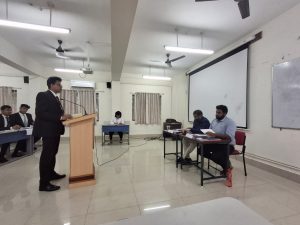
Finally, the respondent sought to anchor Creta’s alleged conduct within broader legal doctrines, invoking analogies from the Sale of Goods Act to describe unfair contractual conditions. However, the bench appeared skeptical of this relevance in a competition law context. The respondent nonetheless defended their position using statutory interpretations and referenced market impact studies to demonstrate anti-competitive harm. Following these submissions, the court opened the floor to rebuttals and sur-rebuttals from both parties, allowing final clarifications on jurisdiction, procedural fairness, and the nature of Creta’s pricing and data practices before concluding the session.
TEAM QUALIFYING FOR SEMI-FINAL ROUNDS ARE-
T-14
T-15
T-23
T-13


